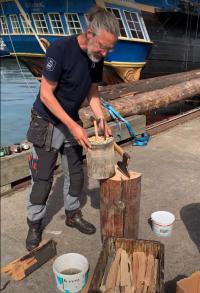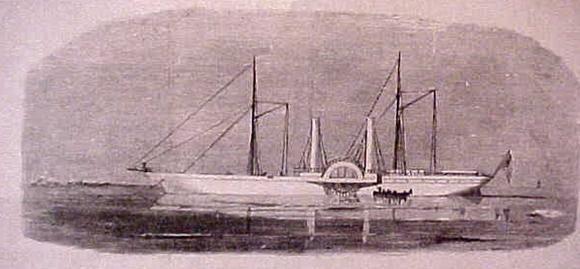 Before chemical or petroleum-based sealants, tar made from pine trees had a myriad of uses; from protecting hemp ropes, lines, and cable from rot; to waterproofing canvas; for preserving wood; to being used as an antiseptic in chronic skin conditions. It was also known as Stockholm tar because a single company held a royal monopoly on its export out of Stockholm, Sweden.
Before chemical or petroleum-based sealants, tar made from pine trees had a myriad of uses; from protecting hemp ropes, lines, and cable from rot; to waterproofing canvas; for preserving wood; to being used as an antiseptic in chronic skin conditions. It was also known as Stockholm tar because a single company held a royal monopoly on its export out of Stockholm, Sweden.
In the 17th century, the Royal Navy bought most of its tar from Sweden, shifting in the 18th century to importing from its North American colonies, primarily from the Carolinas. British sailors whose hands would become stained by handling tarred lines became known as “tars.” Residents of North Carolina, where tar was produced, became known as “tar heels.”
But how does one make tar from pine? Continue reading



 We recently posted about Michael Packard, a Cape Cod diver, who found himself
We recently posted about Michael Packard, a Cape Cod diver, who found himself  Exciting news from the crew of the
Exciting news from the crew of the  One hundred and seventeen years ago today, the disaster on
One hundred and seventeen years ago today, the disaster on  A diver from Cape Cod, Massachusetts was
A diver from Cape Cod, Massachusetts was  A thick, slimy layer of so-called “sea snot” has spread in Turkey’s
A thick, slimy layer of so-called “sea snot” has spread in Turkey’s  When the cruise ship
When the cruise ship 
 The ex-Cunard luxury liner
The ex-Cunard luxury liner  In a few days, the composite clipper ship
In a few days, the composite clipper ship  Back in 2017, we posted
Back in 2017, we posted  I am aware of only one man who was praised by both Eisenhower and Hitler. A
I am aware of only one man who was praised by both Eisenhower and Hitler. A  Something very strange took place around the middle of July 2019 off the coast of California, near San Diego. Leaked radar images and video from the
Something very strange took place around the middle of July 2019 off the coast of California, near San Diego. Leaked radar images and video from the  Pollution from the container ship
Pollution from the container ship  The
The 
 Interesting news from the UK. Prime Minister, Boris Johnson, announced the
Interesting news from the UK. Prime Minister, Boris Johnson, announced the